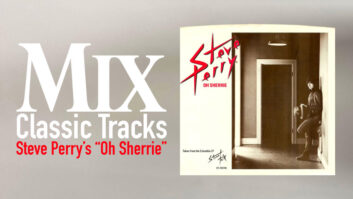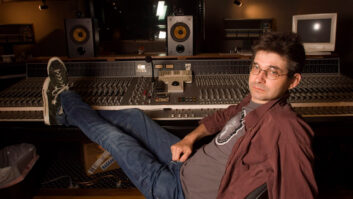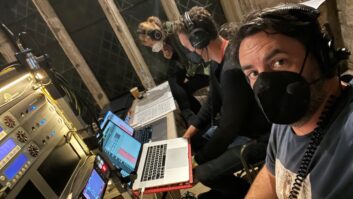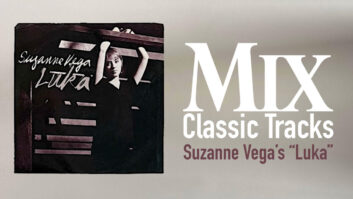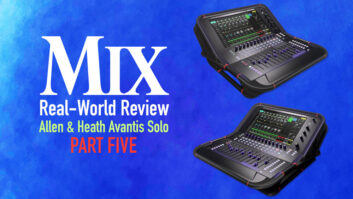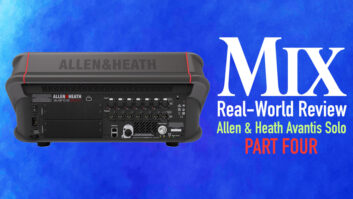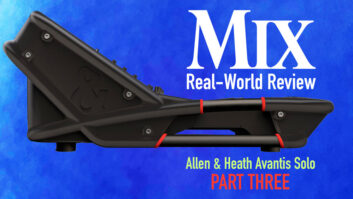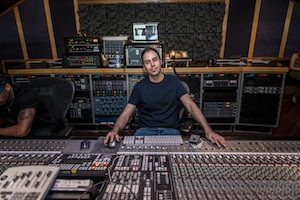
Steve Kovacs picked Chicago. An Arizona native and Conservatory of Recording Arts & Sciences (Phoenix) graduate—with further studies in Music Theory and Composition at Berklee College of Music—he targeted Chicago, based on a longtime love of the city’s blues tradition and its alternative/indie emergence with the Pumpkins, Ministry, Wilco and the like.
It took him more than a year to get an internship at Pressure Point Recording, and he’s been there ever since. Nine years now. He assisted for noted local engineer Larry Sturm for years, working at night on his own real-world education, learning the SSL 9K and integrating his roots in analog (4-track cassette as a 13-year-old guitar player) with a tasty dash of plug-ins. Now he’s tracking and/or mixing for the likes of Shirley Caesar, Toots & the Maytals, Jennifer Hudson, VaShawn Mitchell and emerging, locally grown, multi-talented artist Mathien.
Mix caught up with Kovacs in mid-May, and we found that with his current blend of young-Chicago rap, a dose of gospel and some tried-and-true rock, all is well and good.
How do you approach a rock record when you sit down to mix? Where do you begin? Different from hip-hop/rap?
I always start with drums, making sure I have attack, punch and thwacks. Metric Halo’s channel strip on kick and snare is everything you need to get started. I love its musical gate function and auto-gain/turn-it-up compressor. Gets me pumped to tackle the rest! I’ll usually approach a rap mix the same way. It has to bang! It’s what you pull up after that’s different. I cannot be as musical with a rap mix. It’s beat and lyrics.
What’s your take on low end?
Know your room and your monitors! For me it’s a “feel” thing. I judge from the vibrations through the console framework, or the way the exit sign rattles, and that’s usually after a trusty car-test. I use the UAD “Voice of God” plug-in to beef up lower-octave material, followed by a UAD dbx 160 to keep it tight, sometimes in reverse order.
Drums? Do you work with samples and live instruments?
I am always collecting acoustic drum samples. Not for replacement, but for enhancement. I use Slate Digital’s Trigger plug-in to combine the live snare with a “snare helper.” I’m usually after overtones from the sample, not attack. A fast acting/nuking compressor helps achieve this: Distressor!
Guitar? Where do you like guitar to sit? Can you give me an example of how you get a rock guitar to stand out?
My main guitars usually hang hard left and right; free up that center for vocals, etc. I also like to take a mono guitar, pan it hard to one side, send to an effect, usually a spring reverb, and return on the opposite side. Production-wise, the original intent of a guitar part has a purpose, but if it lacks the drive, I’ll try a preset from the Sansamp PSA-1 plug-in, and tweak to fit. My favorite is the MXR+ setting
Compression. When and where and why?
Definitely lead vocals! I’ll run a few hardware compressors parallel to the dry vocal. Essentially it’s like multiplying your vocal to compete with a dense mix—keeping your original channel safe from overloading, while adding characteristics like the warm “color” of an 1176 revision F, the harmonic edginess from a Distressor, and not to mention different ratios and attack/release times.
The mix order. The first thing I do when I sit down to mix Mathien’s tracks is…
Darling Television was produced in-house, so it’s familiar territory, but a song will tell you what it wants, and in some cases I had to drop the pride and pretend to mix from an outsider perspective. I’m talking about the song “Flame.” Approaching the mix, I wanted to go more pop, than “rock-band.” This meant stripping some big-sounding rhythmic guitars in the chorus, leaving a piano and arpeggio guitar as the main focus. Once it felt right, and less distracting, I could start the mix. Don’t worry, those guitars make an appearance during the solo-section, creating a peak of excitement.
The Mathien records are different, though. I’m involved from the beginning, from offering suggestions to drum tuning. On this record we were looking for a more simplified, old-school approach, to the point that I was using mono overheads in spots. On two songs we pretty much recorded live, keeping, I think, the first or second take. On “John Madden,” right after the second verse, you can hear the drummer was off for a hit or two, but we kept it. The mistake fit right into the performance. Perfect.

